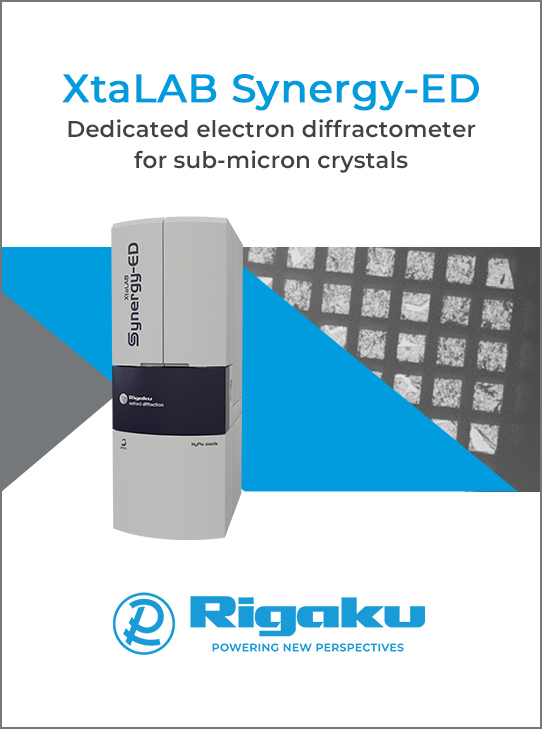


Commentary
How much do molecular shapes matter?
![me6220thumbnail [me6220thumbnail]](https://www.iucr.org/__data/assets/image/0005/156812/me6220thumbnail.jpg)
Polymorphism, a phenomenon where the same chemical entity yields different crystal modifications, has been known since the discovery of the phenomenon in benzamine (Wohler & Liebig, 1832). In recent years, polymorphism has become an intensively researched area because of its direct impact on the behaviour of industrial organic materials, particularly pharmaceutical solids, and to some extent dyes, pesticides and explosives (Brittain, 2016; Bernstein, 2020). In the case of pharmaceutical solids, the impetus came from real situations when problems faced with the large-scale crystallizations of drug compounds produced polymorphs with properties affecting the efficacy of the drug (solubility and bioavailability) (Bauer et al., 2001).
Polymorphism is just part of the story of molecules crystallizing in unwanted, uncontrollable forms. Another layer to this area is the study of the growth of crystals containing crystallization solvents (or water) in the crystal structure, a phenomenon with many terms: solvates, solvatomorphs, pseudo-polymorphs, inclusion compounds and clathrates. Research efforts in this area seem to be ever growing, in part because of the promise of improving solubility and the shelf life or avenues to grow molecular cocrystals incorporating other bioactive components. Therefore, it is not surprising that this research area has become an indispensable part of R&D programs of several large multi-national pharmaceutical companies and has also seen engagement from chemists and chemical engineers worldwide. Of course, this research has both a strong commercial angle in the form of protecting new formulations through patents and a research angle deepening our understanding of crystal nucleation and growth and the intermolecular interactions that hold these crystals together. There have been several books, reviews and monographs on these topics (see Griesser, 2006; Cruz-Cabeza et al., 2015; Healy, 2017) and the research interest in this field is likely to continue growing, as shown by one very recent example in which the journal Pharmaceutics will publish a special issue in 2023 entitled Polymorphism and Pseudopolymorphism of Pharmaceutical Substances.
Therefore, the article Exploring the thermal behaviour of the solvated structures of nifedipine by Jones et al. (2023) is a timely and important contribution to this research area. Their research has thoroughly investigated solvates of nifedipine (NIF), a dihydropyridine drug [Fig. 1(a)] developed as an L-type calcium channel antagonist (Tang et al., 2016). The authors, after a wide screening of solvents, reported crystal structures of seven solvates studied using differential scanning calorimetry and thermogravimetric analysis and by variable-temperature X-ray powder diffraction to understand their desolvation behaviour, stability and structural changes during these processes. The structure of nifedipine without any solvent (the stable α form) was reported by Triggle et al. (1980) and there have been several publications on other polymorphs and solvates of this drug (Caira et al., 2003; Klimakow et al., 2010; Gunn et al., 2012). However, the paper by Jones et al. (2023) supplies a much broader landscape on the behaviour of solvated forms of this drug. Studies such as these are valuable in many ways, providing experimentally observed conformations of the drug molecule in different crystalline environments, enriching our understanding of the roles played by solvents in crystal growth and providing an insight into crystal engineering principles by analysing intermolecular interactions in different crystal forms.
![[me6220fig1]](https://www.iucr.org/__data/assets/image/0006/156813/me6220fig1.jpg)
It is intriguing that all seven solvates (including those with significantly different motifs, such as the THF solvate) desolvate to the thermodynamically stable α form. This implies that there would be a conserved stable framework of NIF molecules to which all solvated forms return once the solvent molecules leave the crystal lattice! It is worth exploring what (if any) commonalities may exist in the patterns of molecular packing. The NIF molecule resembles a T shape [Fig. 1(b)] and interlocks itself with its centrosymmetric counterpart forming a dimeric pair which form layers [Fig. 1(d)], as seen in the original unsolvated crystal structure of NIF (α form). Could this centrosymmetric dimer making C—H⋯O and C—H⋯π contacts [Fig. 1(c)] be a synthon (Desiraju, 1995) in the family of structures of this molecule?
The category 1 system of NIF packing can be seen in the zoomed-out views in Fig. 2. The NIF (in blue) adopts similar structures incorporating 1,4-dioxane, morpholine, DMSO and DMA (orange, orange, green and orange, respectively). Despite containing different solvents, the host molecular association bears a close relationship with that seen in the α-NIF structure.
![[me6220fig2]](https://www.iucr.org/__data/assets/image/0007/156814/me6220fig2.jpg)
What is interesting is the packing of the molecules in the second category, which yield different structures (Fig. 3). As discussed in detail by the authors, solvents interact with the NIF molecule quite differently compared to the first category; also, the conformation of the NIF molecule is cis–cis in Figs. 3(b) and 3(c). But the pattern of host molecular packing, although with more modulations, is seen to exist in all three solvates. An intriguing case is that of pyridine solvate which has added complexity of crystallizing in a chiral space group. In this case, the two molecules of the asymmetric unit (light blue and dark blue) form this dimeric embrace, whereas in the other solvates it is the association of centrosymmetrically-related molecules.
![[me6220fig3]](https://www.iucr.org/__data/assets/image/0008/156815/me6220fig3.jpg)
Therefore, it is conceivable to trace the possible mechanistic pathways for desolvation that converge to the stable α form with the least molecular movement. This case study of conserved packing patterns is of interest for crystal engineering purposes and reminds us of the geometrical approaches discussed years ago by Kitaigorodsky (1961). Do angled frameworks of molecules exhibit these isostructuralities during their molecular packing in forming crystals? Many solvates formed from L-shaped host molecules (Alshahateet et al., 2015; Bishop et al., 2018) were also noted to form a centrosymmetric dimeric association. Host molecule organization governed by relatively weaker interactions creates a well conserved layered framework allowing intercalations of several solvents that form stronger hydrogen bonds with the host.
Jones et al. (2023) also state an interesting use of the seeding technique to produce a δ form of NIF using crystals of a similar molecule, felodipine, that produces a cis–cis conformation for the NIF molecule (felodipine is not a symmetric molecule, but it does show this packing feature). Could this form a co-crystal, and would such studies lead us to the complementary 'fitting' in producing multicomponent molecular crystals? It is very likely that in future we will see fascinating multi-component crystals, as creatively combined as fishes with birds and fishes with horses by the legendary artist Escher (Fig. 4).
![[me6220fig4]](https://www.iucr.org/__data/assets/image/0009/156816/me6220fig4.jpg)
References
Alshahateet, S. F., Bhadbhade, M. M., Bishop, R. & Scudder, M. L. (2015). CrystEngComm, 17, 877–888.
Bernstein, J. (2020). Polymorphism in Molecular Crystals, 2nd ed. Oxford University Press.
Bishop, R., Bhadbhade, M. M., Scudder, M. L. & Gao, J. (2018). Cryst. Growth Des. 18, 4880–4889.
Brittain, H. G. (2016). Polymorphism in Pharmaceutical Solids, 2nd ed. Boca Raton: Taylor & Francis.
Cruz-Cabeza, A. J., Reutzel-Edens, S. M. & Bernstein, J. (2015). Chem. Soc. Rev. 44, 8619–8635.
Desiraju, G. (1995). Angew. Chem. Int. Ed. Engl. 34, 2311–2327.
Gunn, E., Guzei, I. A., Cai, T. & Yu, L. (2012). Cryst. Growth Des. 12, 2037–2043.
Healy, A. M., Worku, Z. A., Kumar, D. & Madi, A. M. (2017). Adv. Drug Deliv. Rev. 117, 25–46.
Kitaigorodsky, A. I. (1961). Organic Chemical Crystallography. New York: Consultants Bureau.
Klimakow, M., Rademann, K. & Emmerling, F. (2010). Cryst. Growth Des. 10, 2693–2698.
Wöhler, F. & Liebig, J. (1832). Ann. Pharm. 3, 249–282.
Triggle, A. M., Shefter, E. & Triggle, D. J. (1980). J. Med. Chem. 23, 1442–1445.
This article was originally published in Acta Cryst. (2023). B79, 101–103.
Copyright © - All Rights Reserved - International Union of Crystallography







